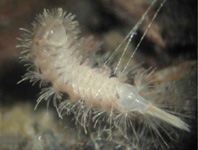Abstract
Paravespa rex is the only species of the wasp genus Paravespa that occurs in Europe. Females of this species nest in clay loam soil of proluvial terraces and deluvial aprons of badlands. The nests are vertical burrows 10–12 cm deep, surmounted by turrets of two distinct architectural forms: funnel-shaped and curved. The nests contain 1–3 vertical cells (mean—1.9) not different from the other parts of nest burrow. An egg is laid onto the bottom of the cell without attaching; it stands vertically via the moist adhesive surface of the bottom and then with the help of the position of the first prey, which is laid around the egg. The species is univoltine; prepupae hibernate in the cocoon for one or several years. Females hunt for caterpillars of two species of the noctuid genus Heliotis; 3–7 caterpillars (mean—3.7) are stored per cell. Adult feeding is recorded on flowers of Thymus tauricus. Males look for females at their water-collecting sites. Only a third of the cells are successful; the other ones are damaged by rain and the gold wasp, Chrysis valesiana, parasitizing in the nests. Nest-building and hunting activity of the species is described with the duration of certain nesting acts. Nesting biology of Paravespa species, rarity of P. rex, turret function, egg position, and measures for species conservation are discussed.

